

USU



USU
By Aubrey Holdaway STATESMAN REPORTER
Buried within the tree rings of Utah’s forests lies a hidden history of survival and change — a history that can clue us into the future. At Utah State University, groundbreaking research is underway that could change how we understand forests and their response to climate change.
Researchers from USU’s wildland resources department are pairing historical tree ring data from the T.W. Daniels Experimental Forest in Logan Canyon, formerly known as the School Forest, with modern climate records. Climate change will impact forests worldwide, either as a benefit or a detriment depending on the forest type.
Associate professor Justin DeRose and dendrochronologist — someone who studies tree rings to learn about the history of trees and climate change — Ryan Jess are leading this project, hoping to gain insight into these effects on forests in the Intermountain West.
“The goal here is to look at how these stands have responded to climate variables over the 20th century to help us understand how they’re going to respond in the future,” DeRose said.
The research required taking samples from a large stand — a distinct forest area that is relatively uniform in various characteristics — of trees in the experimental forest.
“In general, trees are the best journal keepers in nature,” Jess said. “They record everything that happens to them by how much they grow, and that creates a pattern throughout time.”
Tree ring samples were taken from each tree individually using a drill bit to leave the tree unharmed. According to DeRose, this was a huge undertaking.

“It’s somewhat intensive, the research we do,” DeRose said. “It involves installing plots that are large enough to cover the different things that happen in that forest type and taking increment cores — tree rings — from maybe 1,000 or 1,200 trees in a given area,”
Back in the dendrochronology lab, the samples are analyzed to reveal patterns of growth that correspond to climate data. By examining the width, density and chemical composition of each ring, the team can pinpoint how specific trees responded to different environmental stressors.
“We hope to learn whether those variation responses are consistent or change over time as the stand grows,” DeRose said. “That’s one of the ultimate questions we haven’t understood yet.”


“Aubrey Holdaway is a senior studying print journalism. She loves all things outdoors, sweater weather and the band Slaughter Beach, Dog.
— a.holdaway@usu.edu

October 2
- A USUPD officer detected a suspicious odor in the central campus area. The USU Department of Environmental Health and Safety was called out to investigate. The odor was determined to be drying sewage lines and no threat to public safety.
October 11
- USU Police EOD K-9 Team conducted a sweep of Maverik Stadium prior to the USU vs. UNLV football game.
October 3
- An individual concerned for a stray cat on campus called the USU Department Public Safety for assistance. The responding officer met with the complainant and shared information on the Aggie feral cat program.
- Two dogs were reported by the Reeder cross country track. The responding USUPD officer was able to take custody of one of the animals but was unable to locate the owner. The dog was taken to the animal shelter for its safety.

By Claire Ott STATESMAN REPORTER
What do you get when you combine biking and backpacking? You get what is widely referred to as bikepacking. An activity that I learned about from friends who’ve done it and some internet surfing.
Make it we did. We signed up without much discussion, and from there, excitement but also nerves built in anticipation.
What were the conditions going to be like?
Will I pack the right things? Will I be able to do it? How am I going to organize all I need into just a few bags? These are just some of the questions I had prior to the trip.

The idea of it had me intrigued, and I had the desire to take a trip of my own, but there was one problem: a lack of experience and gear made the idea feel too far out of my reach. This is just the thing Outdoor Programs at Utah State seeks to assist with and make easier to access according to trip leaders, Anna Rupper and Junlin “Dolphin” Qian. It was just a few weeks ago that I had been talking about going bikepacking with a friend of mine. Neither of us had experience or the proper gear, but we were going to try anyway. A few days after that, the OP announced a bikepacking trip, and I thought to myself, “This is perfect — we have to make it on this trip.”
A $50 fee secured us food, gear and transportation to and from our starting point. The trip leaders also recommended we bring any gear we already own and that we would figure out how to make it all work. Before we embarked on our bikepacking adventure, a pre-trip meeting was held to discuss trip details, rig bikes and get to know each other a little bit.
Rupper, the main guide for the trip, said in her initial email that this trip was a first of its kind for the OP, so the pre-trip meeting would be based around planning. According to Rupper, she first proposed a bikepacking trip a year and a half ago. At the time she hadn’t even gone bikepacking, but now, equipped with experience of her own, she felt confident it could work and they
could pull it off.
“I started off having a really big dream of doing a multi-day bikepacking trip through the desert,” Rupper said. However, she mentioned difficulties with acquiring permits for specific areas.
After playing with a few ideas, she eventually came to the realization she would need to start small.
“Rather than putting together an elaborate, multi-day bikepacking trip, I opted for an overnight in the mountains nearby, which ended up being perfect,” Rupper said.
On the night of the pre-trip meeting, I entered the rental shop and sat down at a table to fill out some paperwork. There was an air in the room that screamed, “We don’t know each other, and we’re doing new things,” which is to be expected when you’re doing new things with new people.
Following an icebreaker, we discussed the route we wanted to take and some applications that are helpful in route planning.
We discussed each of our comfort and skill levels to gauge an optimal route, which I felt to be a beneficial and preferable way to pick routes.
Rupper had brainstormed some routes prior to the meeting, so we picked from some she had cooked up beforehand. We landed on a route that was around 10 miles, which gave us the option to drop into town or explore if we wanted to.


Claire Ott is a senior studying journalism and enviornmental sceince. She enjoys being a photographer because she gets to capture some cool things.

By Layla Alnadar STATESMAN REPORTER
Utah is home to many diverse and natural landscapes. Its unique geography lends itself to the Wasatch Range, Moab’s iconic red rock, Zion National Park, the Great Salt Lake and more. These places are on Utah’s public land, managed by local, state and federal government agencies.
Surrounding the public lands, western gateway communities, or small cities and towns, reside outside of abundant natural amenities such as ski areas, rivers and national parks.
In 2020, the Journal of the American Planning Association published a journal on the current planning and development challenges facing western gateway communities, defining a gateway community as a census-designated place of 150 to 20,000 located within 10 miles from the boundary of a national park, national monument, national forest, state park or any major river or lake and at least 15 miles away from any urbanized area by road.
Gateway communities are crucial to the growth and sustainment of Utah’s outdoors. Local public land managers, such as park rangers or forest firefighters, need to live in these gateway communities to study and conduct research, to work on public lands and to protect them.
Gateway communities also play a vital role in many people’s trips when they are traveling throughout Utah. Hotels, restaurants and shops support the economy of these communities, but this simultaneously makes it harder for residents to diversify from tourism. Gateway communities are also home to first responders who aid visitors.
In turn of growing popularity of Utah’s outdoor recreation life, gateway communities have been introduced to big-city problems including severe congestion, lack of affordable workforce housing and urban sprawl.

These issues contribute to mounting pressures on people and the surrounding land.
Urban sprawl and climate change are issues affecting Utah more generally. As communities and infrastructure grow, all types of pollution are exacerbated.
Elizabeth Sodja serves as the program coordinator of the Gateway & Natural Amenity Region Initiative at Utah State University.
“The future of gateway communities in Utah is in flux right now,” Sodja wrote in an email to The Utah Statesman.
The GNAR Initiative is supported by the USU Institute of Outdoor Recreation and Tourism, the USU Department of Landscape Architecture and Environmental Planning Extension and the Wallace Stegner Center for Land,



By Essence Barnes STATESMAN REPORTER
The caves of Logan Canyon offer visitors and locals the opportunity to explore 100 winding miles of arches, springs and towering cliffs, providing a scenic setting for outdoor recreation and adventure. But under these geological attractions lies another, harder to reach ecosystem of caves and conduits known as karst systems.
Luke Alder is a graduate student under the USU geosciences department who is researching the karst systems of the Bear River Range in Logan canyon.
“Where Logan is today, hundreds of millions of years ago it was a shallow sea,” Alder said. “Living things that were in the sea — their skeletons and shells were deposited, and they eventually turned into rock.”
These deposits are a form of carbonate rock, such as dolomite and limestone. Carbonate rock makes up the vast majority of geological features in Logan and are easily dissolved by acids.
“Rainwater is slightly acidic,” Alder said. “Water mixes with carbon dioxide in the atmosphere and carbon in the soil, and it forms a weak acid called carbonic acid.”
Over time, this weak acid erodes the sensitive carbonate rock and forms hollow caverns like the Wind Caves and the Minnetonka Cave that are visible today.
“In the Minnetonka Cave case, it has remained underground,” Alder said. “Whereas with the wind caves, that erosion is now exposed to the surface because the overlying layers have eroded away.”
This process of erosion created karst systems, an underground drainage network of caves, sinkholes and aquifers where groundwater and surface water are stored and transported throughout the canyon.
Due to the complex structures of these karsts and how deep they are below the earth’s surface, it is often difficult to track where water is flowing through the system.
“It makes it a lot more complicated to figure out where water is going to end up going, and that can complicate things a bit on the management side of things,” Alder said.
The karst systems provide Logan with a large portion of its water supply, and understanding the flow and direction of water is important when determining the amount of water resources that are available to the community.
“If we have water that moves through the system really fast, then we aren’t going to have a big backup of water supply,” Alder said. “If water moves through really slowly, then we will have some resilience to drought conditions.”
Kirsten Bahr is a physical science technician for the National Park Service and the chair of the Salt Lake Grotto club. Throughout her education, Bahr has researched caves and traversed the cold underground of Logan karst systems to study the flow of water.
“The head of the Logan River actually comes out of the
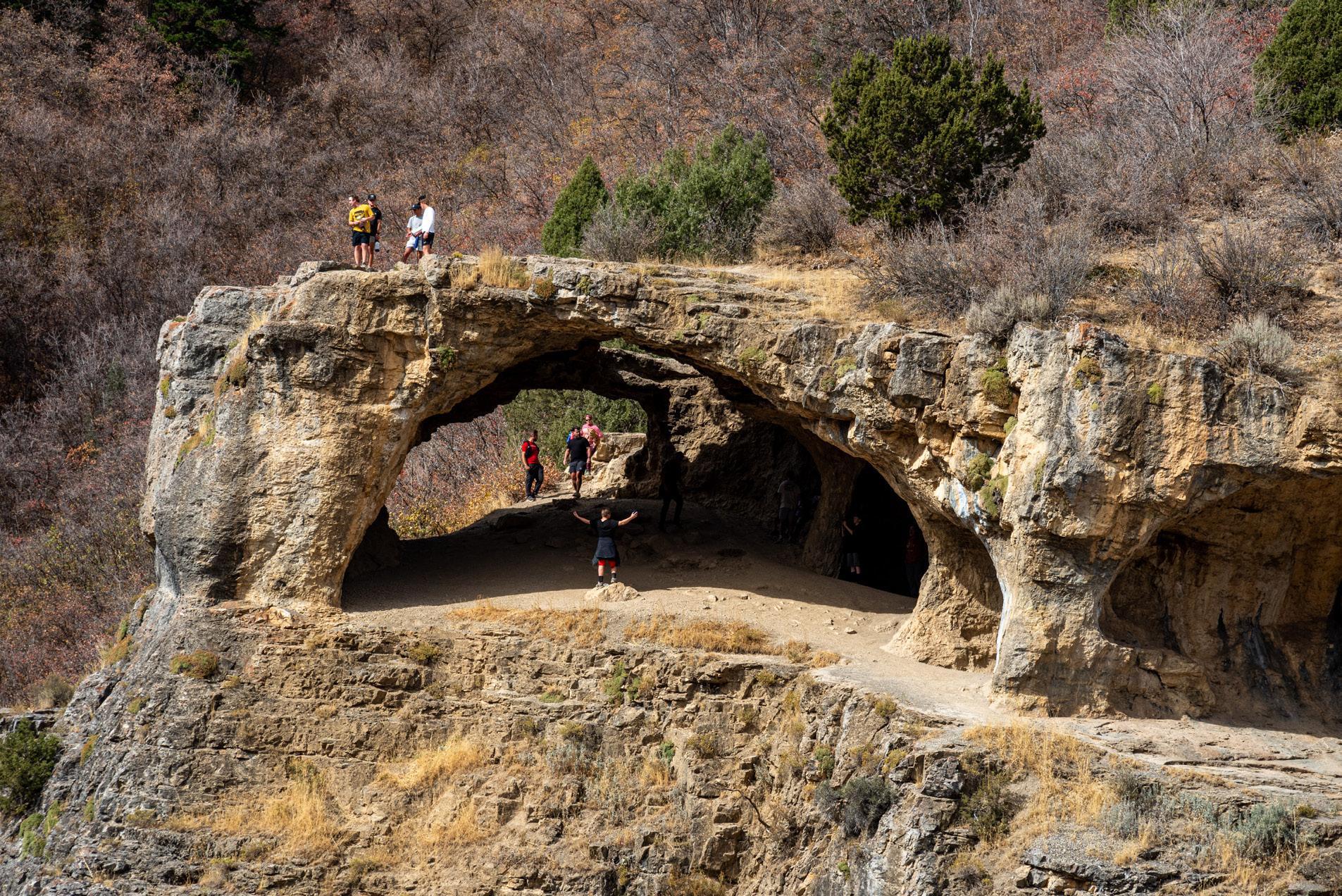
karst system,” Bahr said. “There’s these little patches of karst that come out at different springs that all empty into the Logan River.”
According to Bahr, the water moves through the Logan karst systems faster than other karst systems because of its mountainous geography.
“The water is not reaching the water table until it hits the Logan River,” Bahr said. “There are some places in the Bear River range where we don’t know where the water comes out yet because it’s so complicated.”
According to an article published by American Scientist, these karst systems are living ecosystems themselves, supporting a wide variety of flora and fauna unique to the dark, cold atmosphere of the caves. The sustainability and success of the karst systems is largely dependent on the success of the living and nonliving components within them.
“It’s not really a renewable ecosystem,” Bahr said. “Once it’s damaged, it’s fairly hard to fix.”
Preservation of karst systems and the caves surrounding them is challenging when public recreation often leaves them open to damage.
“People may think the formations in caves are really cool, and they’ll break them off,” Bahr said. “That right there probably took over a thousand years to build, and it may never come back.”
Other forms of damage are more severe and can have
a larger impact on the biodiversity and life within the karsts.
“You’ll get people that go in and they’ll spray paint the walls,” Bahr said. “They’re killing the microbes and the life that uses that to survive.”
According to Bahr, it’s important that visitors learn about how the health of karst systems impact the availability of a resource they use and enjoy daily.
“There’s almost a lack of teaching the importance of karst systems,” Bahr said. “I think the best way to preserve them is to educate people.”
As a cave researcher and explorer, Bahr said she values the scientific knowledge and adventure these geological formations provide and hopes to see them preserved.
“It’s those moments where you forget that the cave is a living breathing thing,” Bahr said. “It’s entirely possible to do all of those things — recreation, exploration and researching — and the caves will still be around for years and years to come.”

Essence Barnes is a secondyear student majoring in journalism and minoring in environmental studies. She enjoys reading, writing and caffeine.
By Avery Truman STATESMAN REPORTER
If Utahns glanced west during sunset between 6 and 8 p.m. there’s a chance they saw comet C/2023 A3 Tsuchinshan-ATLAS, a rare astronomical sight visible above the horizon between Oct. 12 - 24.
The comet was discovered in January of last year. It hasn’t been this close to Earth for 80,000 years and will take that long to come back again, making the sight a once-in-a-lifetime opportunity.
This comet is the brightest seen since Hale-Bopp passed Earth in 1997.
James Coburn, the USU observatory manager, said comets are usually made of leftover pieces from the early solar system.
“They could have been tossed out from the Oort Cloud by gravitational interactions with Jupiter,” Coburn said. “Finding out what’s in them is kind of like a time capsule.”
The Oort Cloud is a massive shell around the solar system made from space debris and ice. Comets are sometimes referred to as “dirty snowballs” due to their icy and dusty composition. When the ice boils off, it becomes the comet’s telltale tail.
“About 25 trillion miles away is how far it went out before it turned around again,” Coburn said. “Right now, it’s 46 million miles, so it’s roughly half the distance to the sun right now — it’s almost exactly that.”
The tail of a comet will always point away from the sun,

regardless of where the head is traveling.
“The tail is formed by solar wind — charged particles — coming from the sun that pushes the gas away,” Coburn said. “The tail is leading right now.”
Astronomers are constantly searching the skies for undiscovered comets.
“They’ll take pictures and compare picture to picture and watch for something that moves with respect to the background stars,” Coburn said. “We’ve had a year to study it and figure out its orbit.”
Scientists can look at the spectra of a comet to discover what gasses it is composed of. Different elements give unique color spectrums when the light is separated into component wavelengths. An element’s wavelength is like a unique fingerprint — each one identifying only one element. This lets scientists understand what light-producing objects are made of without leaving Earth.

Maria Rodriguez, assistant professor in USU’s physics department, said comets and asteroids have some important distinctions between them, one being how bright comets can get.
“They rarely are so bright that you can see them with a naked eye,” Rodriguez said. “This one is very special because the materials that they’re made out of decompose faster, so we can see it.”
According to Rodriguez, data from telescopes can be matched to simulations to understand what’s happening in space.
“We have computer simulations now to see where and how often they would come close to the Earth. That is a very big chunk of the work that people do,” Rodriguez said.
Quinton Harker, a first-year student studying engineering technology, was watching the comet from the Living Learning Center on Oct. 14.
“How awesome is it to be part of an event that happens only once every 80,000 years?” Harker said. “I was born at just the right time, just the right place, to see this one comet.”
According to Harker, people need astronomical events such as this to keep a broad perspective.
“Without it, I feel like we would feel too much like the center of the universe, and everything would revolve around us, and we wouldn’t have any curiosity, and without curiosity, we can’t grow,” Harker said. “You should always be curious. You should never settle for an exact answer.”
Harker said he enjoyed seeing the comet from USU’s campus but wished the viewing conditions could be improved.
“I just wished we didn’t have as much light pollution,” Harker said. “If we could have a night a year where people just dedicate one night to turn off all the lights and just hang out outside, look up, and feel how insignificant we are in the grand scheme of time and the expanse of the universe.”

Avery Truman is pursuing environmental studies and geography. When she’s not working in her position as the Utah Statesman Lifestyles editor, she enjoys writing for NASA and reading science fiction.
By Essence Barnes STATESMAN REPORTER
Joe Masabni, a vegetable extension specialist and professor at Texas A&M, visited Utah State University on Oct. 17 to present his latest findings on recycling fish waste and turning it into a sustainable source of natural fertilizer.
Aquaponics is a combination of hydroponics and aquaculture. It involves farming fish waste and supplying it to plants as a source of nutrients, creating a soilless farming technique and a sustainable recirculating system.
“Fish waste is considered a contaminant,” Masabni said. “Fish growers, or what I call culture operations, want

Plants are grown at the USU
to make sure that none of that waste gets into rivers or lakes.”
Aquaponics utilizes fish effluent as a resource rather than treating it as a contaminant.
“This waste that is a challenge to dispose of is a rich source of nutrients,” Masabni said. “Why are we throwing it away when we can treat it, adjust it, analyze it and recycle it back into the operation?”
The roots of the plants filter the waste water, which can then be returned to the fish.
According to Masabni, this source of plant nutrients is cost-effective and serves as a sustainable addition to the use of chemical fertilizers.
“If you set up fish tanks and filtration, you have a free source of nutrients from the fish effluent that will save you on the cost of chemical fertilizer,” Masabni said. Not only can this process be utilized by small scale aquaponics operations and home gardeners but also by large scale hydroponics operations.
“I don’t think it will replace chemical fertilizer in a hydroponic operation, but it can reduce the cost,” Masabni said. “For an aquaponic operation, they will just have better growth and better yields.”
According to Masabni, phosphorus is a critical compo-
nent of fertilizer, and its availability is gradually decreasing, leading to rising costs for chemical fertilizers.
“We hope that with this process we are able to have a source of phosphorus in our fertilizer just from the fish waste,” Masabni said. “It is sustainable in every way possible.”
While recycling fish waste as fertilizer is a relatively old idea, it has been recently growing in popularity.
“I was at the recent Aquaponics Conference, and other universities are working on fish effluent as a source of nutrients as well,” Masabni said.
Similar research in waste recycling is happening at USU under the Plants, Soils and Climate Department.
Bruce Bugbee, professor of environment plant physiology, and Noah Langenfeld, Ph.D. student, are researching the study of hydroponics for space farming.
Their research into zero discharge agriculture is similar to aquaponics in its focus on recycling waste.
“There’s nothing magic about aquaponics,” Bugbee said. “We need to do a better job, in all of agriculture, of recycling waste back to soils.”
According to Bugbee, a key component of successful aquaponics recycling is the proper compost of the fish waste. Compost requires a microbial bioreactor between the plant and fish tanks large enough to filter the water to suitable nutrient levels.
“Commercially, it is rarely done because it is hard to keep those in balance,” Bugbee said. “Usually people don’t put a big enough bioreactor in the middle, and then their plants don’t grow right, or they have difficulties keeping their nutrients in balance.”

While the aquaponics system is simple in theory, it requires proper maintenance and monitoring in order to achieve balance and results.
“The biggest thing that we’re trying to stress with aquaponics is microorganisms are the key,” Langenfeld said. “You can’t just connect a fish tank to a tank with plants in it, you have to have some type of reactor or space where microbes can live and make those conversions.”


Rosalind hosts “The Fixation Feature,” a show that features a new theme each week. It can range from an hour of music to nap to, to songs they believe could, or should, exist in the world of specific video games. Tune in Fridays from 4:30-5:30 p.m. on Aggie Radio 92.3!













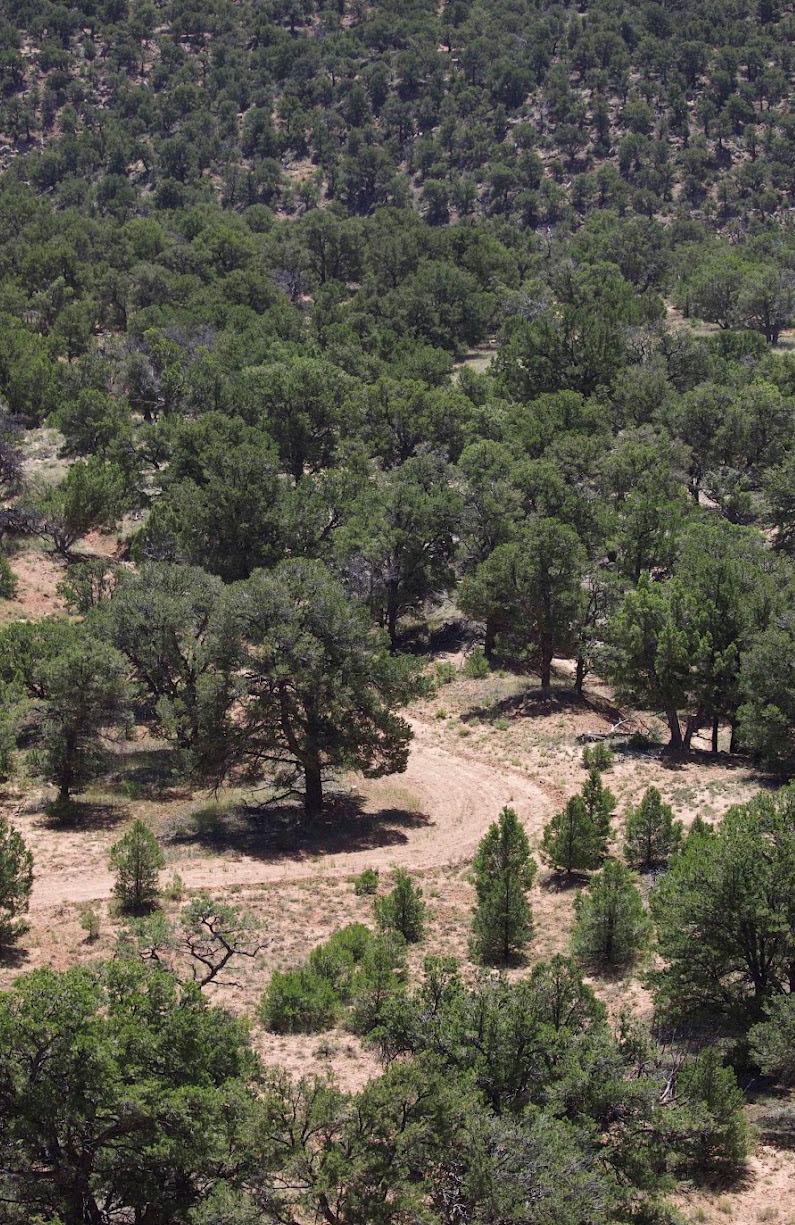
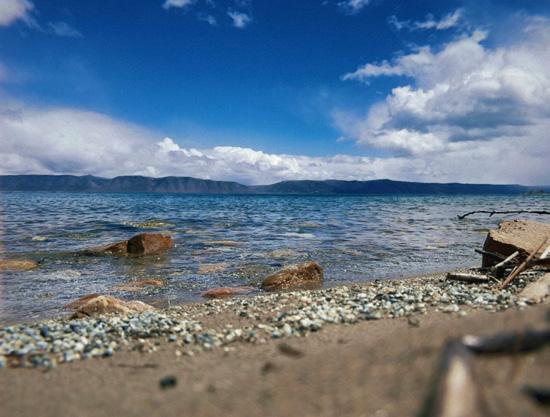
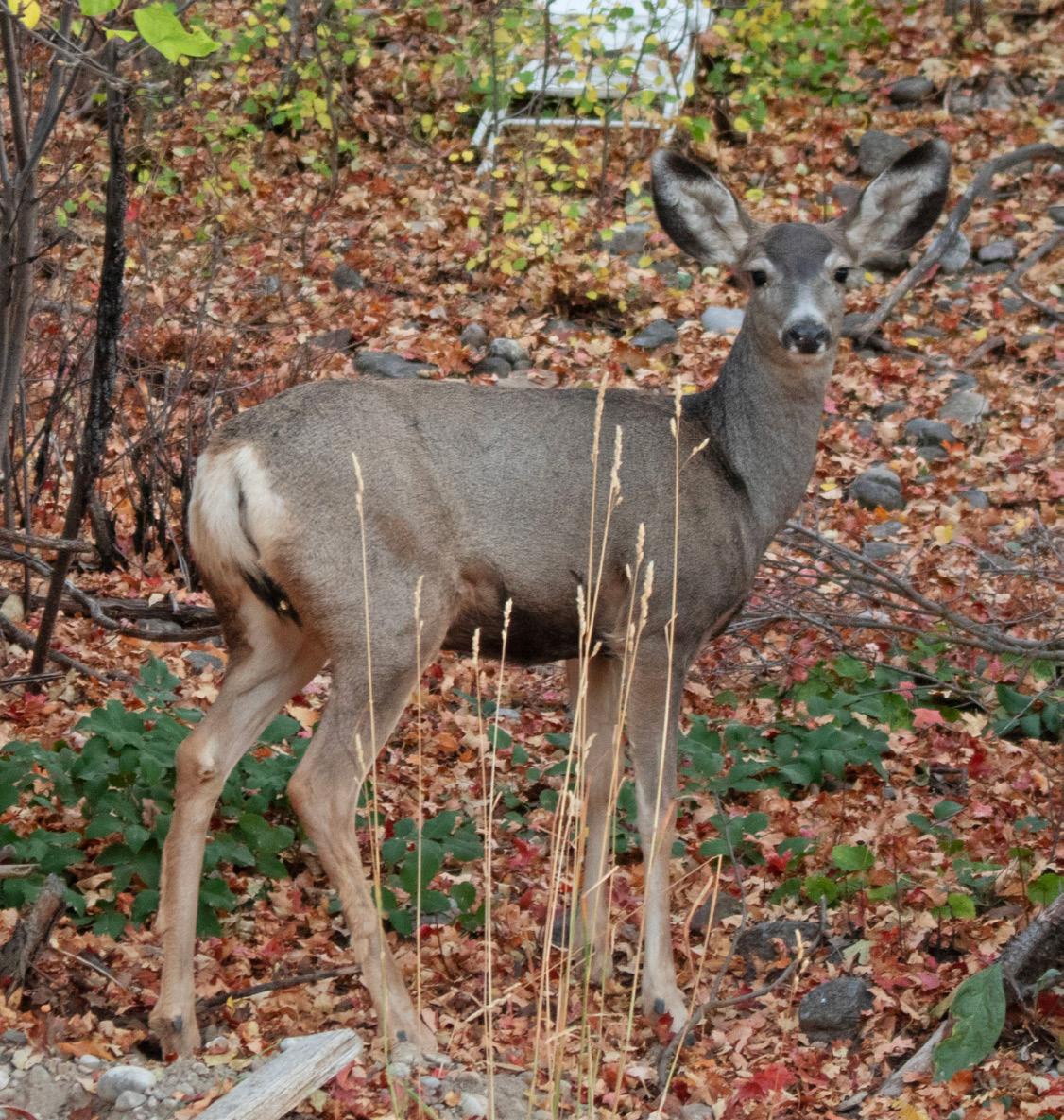
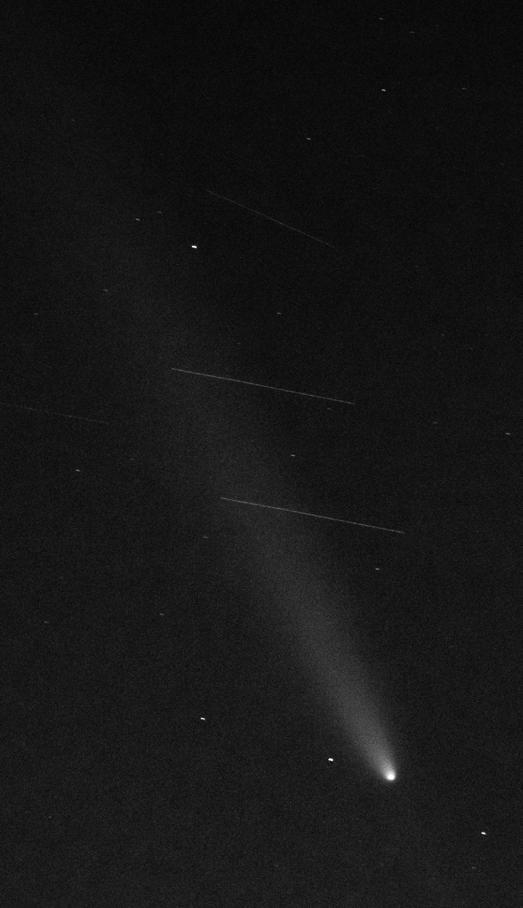






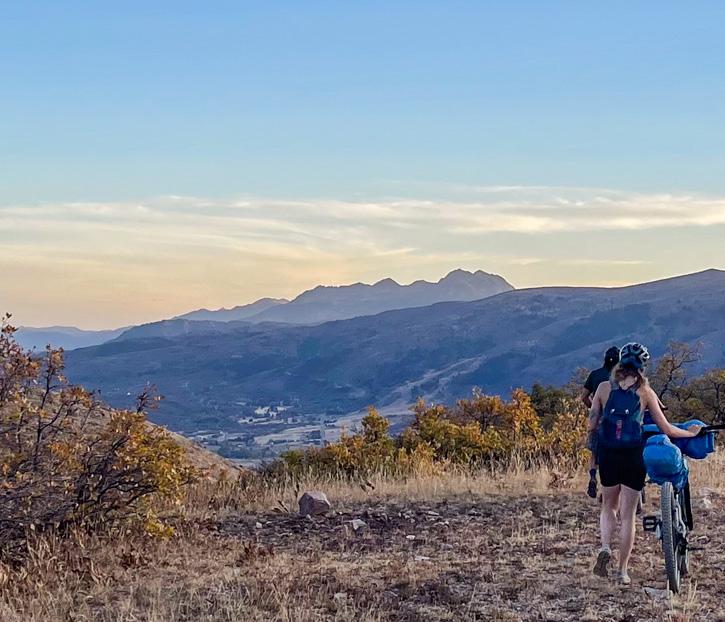




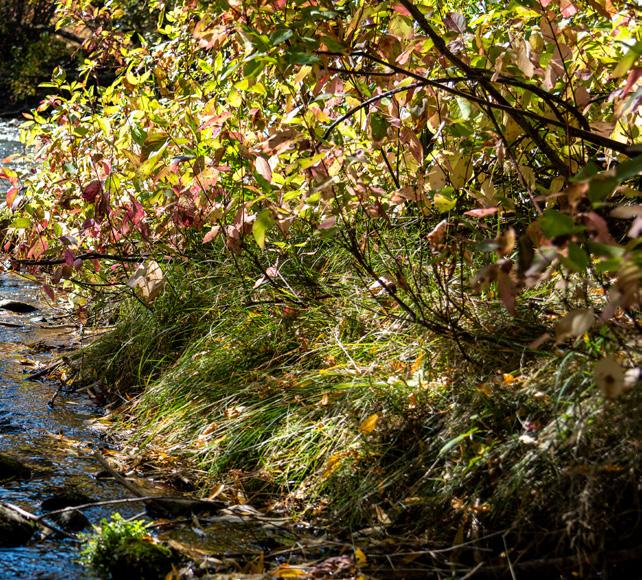
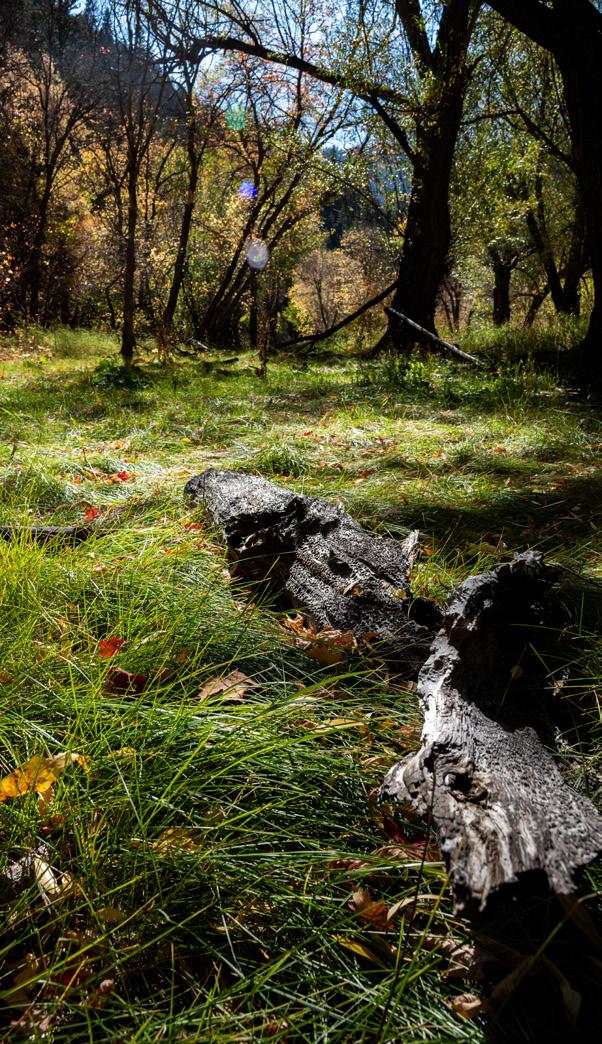


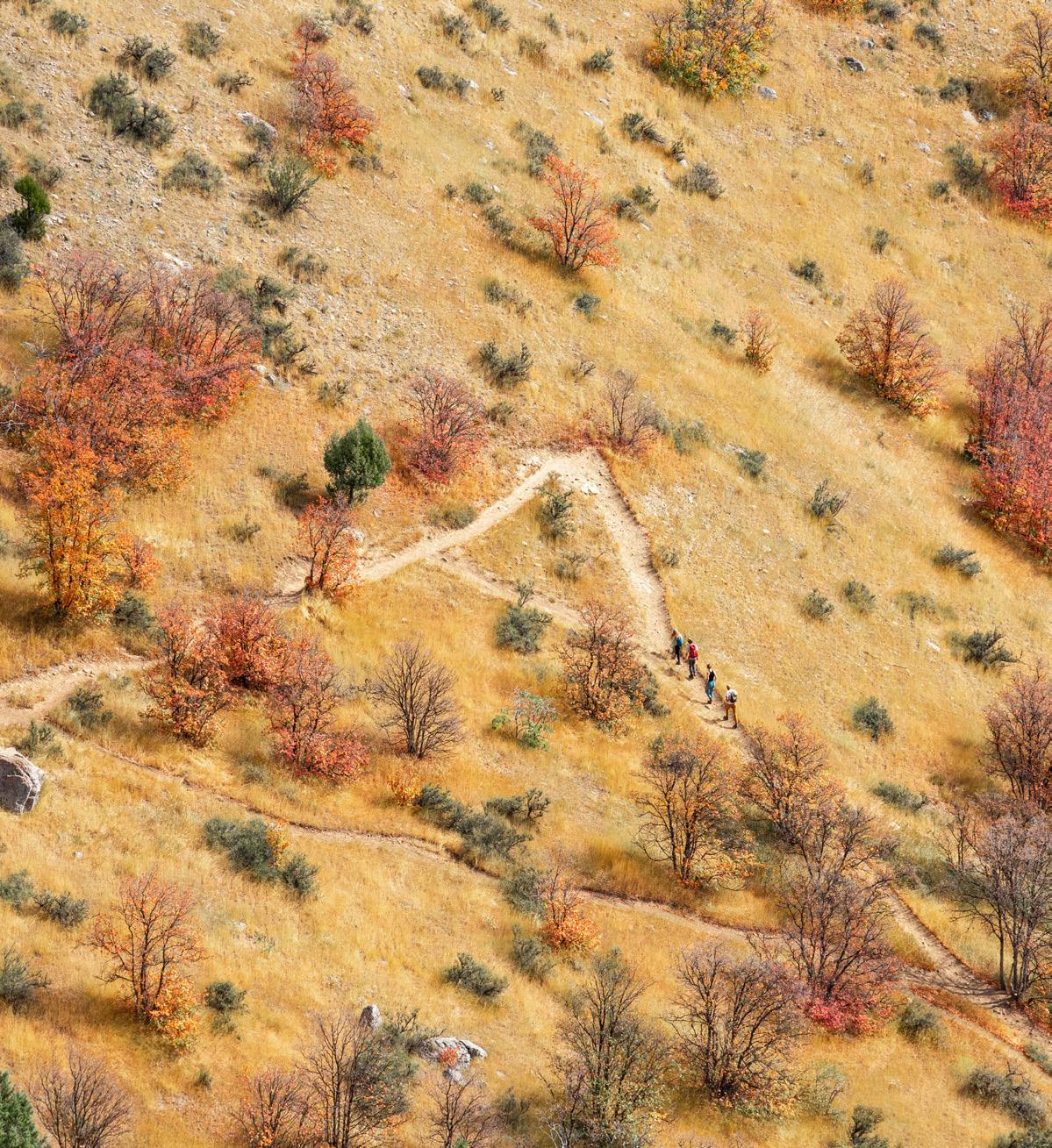
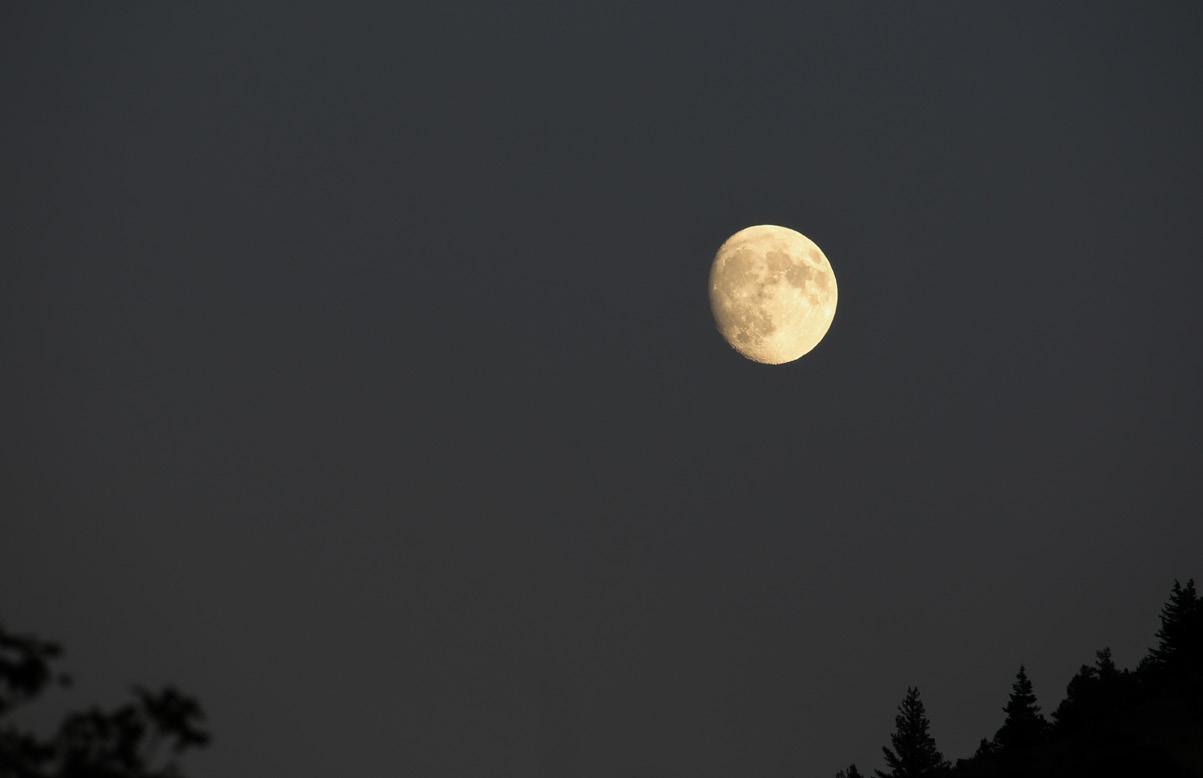
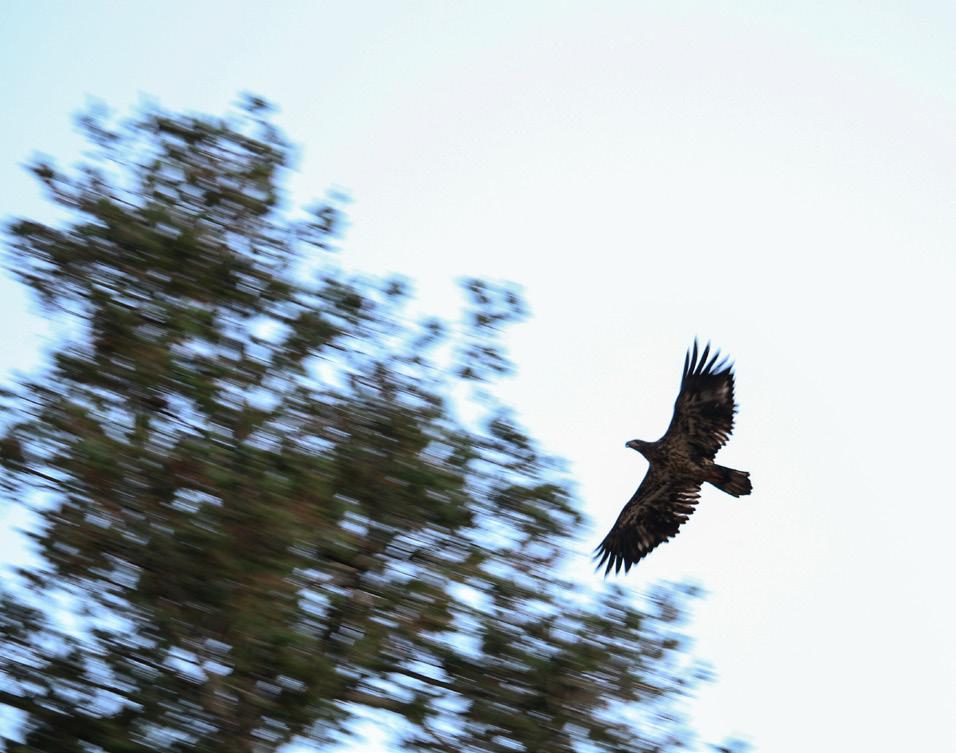


By Samantha Isaacson STATESMAN REPORTER
The streams above Porcupine Dam were bursting with brightly colored kokanee salmon as they performed their yearly salmon run, filling the river beds with eggs. This is a tradition that will be continued by their offspring for as long as they live in the Porcupine Reservoir.
Timothy Walsworth is an assistant professor of fish ecology and fisheries management in the Department of Watershed Sciences and the Ecology Center at Utah State University.
“Porcupine Reservoir hosts a run of kokanee salmon, which are the landlocked form of sockeye salmon (Oncorhynchus nerka),” Walsworth wrote in an email to The Utah Statesman. “While sockeye salmon are anadromous and move between freshwater and marine habitats during different life stages, kokanee salmon remain in freshwater throughout their life.”
The kokanee salmon in the Porcupine Reservoir are landlocked because they don’t have access to the ocean. They can only lay their eggs in the stream connected to the reservoir.
According to Walsworth, the kokanee salmon are not naturally a part of Utah’s lakes and reservoirs.
“Kokanee salmon are not native to Utah, but were introduced to provide sport fishing opportunities. They are native to lakes in the Pacific Northwest (Oregon, Washington, British Columbia, Alaska), as well as in parts of Russia and Japan,” Walsworth wrote.
While the kokanee salmon can be fished for sport in the reservoir, they cannot be fished or harassed during their spawning season.


Autumn Zierenberg is studying fisheries and aquatic sciences at USU.
“It is perfectly fine to go spectate, however, it is illegal to harass the fish while spawning. Harassment includes wading through the river, letting dogs chase them, and any behaviors that might stress the salmon. It is also illegal to fish them from September 30th to November 30th,” Zierenberg wrote in an email to The Utah Statesman.
According to Walsworth, the kokanee salmon’s traditional spawning period is from September to October.
“The Utah Division of Wildlife Resources notes that peak spawning time is usually in the middle of September,” Walsworth wrote.
The kokanee salmon differ from traditional sockeye salmon because they are potamodromous, not anadromous.
“Sockeye salmon are anadromous, meaning they migrate from freshwater to saltwater as young to feed and grow, then migrate back to freshwater to spawn and then die,” Zierenberg wrote. “This life cycle for kokanee mirrors the sockeye life cycle as the fish exhibit potadromy (freshwater to freshwater migration).”
The kokanee salmon’s lifespan is around four years. In the last year of their lives, they travel upstream from a lake or reservoir and lay their eggs in the riverbed where they die. Their nutrients feed the plants and animals within the stream that rely on the fish.
They travel upstream for two major reasons: to provide oxygen for their eggs and to follow their instincts.
“Since it is upstream it is conducive to the salmon’s natural instinct to migrate up river. It is also one of the only tributaries to flow into porcupine,” Zierenberg wrote.
According to Walsworth, kokanee salmon lay their eggs in the stream to make sure they receive oxygen.
“Kokanee salmon spawn in streams where they can dig nests called redds to lay and bury their eggs. The water flowing over and through their redds provide oxygen to the eggs, allowing them to develop into the next generation of Kokanee salmon,” Walsworth wrote.
During the kokanee’s spawning season, they change color from gray to bright red.
Walsworth wrote that the kokanee salmon turn red due to certain pigments in their diet that move to their skin when they get ready to spawn.
“These pigments give Kokanee and sockeye salmon their bright red color, and serve as a signal to potential mates of an individual salmon’s fitness,” Walsworth wrote.
If anyone wishes to see the kokanee salmon upstream from the Porcupine Reservoir, it is important that they are following the regulations set in place to protect the salmon and the fish are not disturbed during their spawning season.
“Those interested in visiting the salmon run should check with the Utah Division of Wildlife Resources for specific regulations. You are allowed to visit Porcupine Reservoir and watch the salmon in the East Fork of the Little Bear River, though you need to be careful about trespassing,” Walsworth wrote.
Specific areas around the stream are acceptable spots for viewing the fish during their spawning season
“In most years, reservoir levels drop enough that the stream extends into the land occupied by the reservoir under higher water conditions. This area at the east end of the reservoir is a great place to observe the Kokanee migration and spawning, but there is private land just upstream that you need to be careful not to trespass on without permission from the landowners,” Walsworth wrote.

Samantha Isaacson is a junior majoring in journalism with a double minor in art and psychology. She loves to read and spend time outdoors.
— a02346802@usu.edu
By Lacey Cintron STATESMAN REPORTER
Thirty-eight miles west through Lo gan Canyon lies Bear Lake, nes tled within the sleepy town of Garden City. Often dubbed the “Caribbean of the Rockies,”
Bear Lake is beloved to locals and visitors alike. In recent years, concern has risen over invasive species and rapid development posing serious threats to the ar ea’s rich biodiversity.
Utah State Universi ty has gathered sci entists, students and stakeholders under the Bear Lake Needs Assessment project in order to outline and address critical issues facing Bear Lake.
Kori Kurtzeborn is a data analysis and communications assistant for the project.
“There are a lot of ques tions right now about the health of Bear Lake’s eco systems,” Kurtzeborn said. “It’s not in crisis, but there’s a lot of emerging threats. There’s sedimen tation issues in the lake and emerging invasive species like Eurasian watermilfoil and quagga mussels.”
The project encompasses three main branches: a comprehensive report of information and man agement plans for Bear Lake, re search programs run by USU and outreach coordination.
One of the biggest concerns which research from the project hopes to address is the presence of Eurasian watermilfoil. Likely brought to Bear Lake by a boat carry ing Eurasian watermilfoil, this aquatic plant creates thick, densely-packed clumps which crowd out other native plants, deoxygenate the water and have serious impacts on biodiversity.
Mirella Ortiz is an assistant professor at USU and has conducted extensive research on invasive species in Bear Lake.
“Eurasian watermilfoil was first identified in Bear Lake in 2019,” Ortiz said. “They did the first treatments with

herbicides in 2020 on the Utah side. They sprayed herbicides in 2021 and in 2022, and when I first visited the sites, they weren’t seeing a good control of the watermilfoil with herbicides that should be highly effective. I was very
To investigate anomalies surrounding Eurasian watermilfoil and its interactions with herbicides in Bear Lake, Ortiz and her research team tested how the watermilfoil grew and interacted with herbicides within samples of Bear Lake water and samples of tap
Results showed the watermilfoil not only grew faster in the Bear Lake samples, but were harder to control via
“The plants were growing almost twice as fast and were a lot more vigorous,” Ortiz said. “We were able to 100% control the plants in tap water but not the plants in Bear Lake water. Either the herbicide is being degraded faster by the water chemistry, or the plant is metabolizing the herbicide a lot faster because it has more vigor.” Further research indicated herbicides do not degrade faster in Bear Lake water, suggesting Eurasian watermilfoil in Bear Lake are especially hardy. Ortiz’s research will now focus on internal processes of the watermilfoil.
“The next question is, once the herbicide gets inside the plant, what happens to the herbicide?” Ortiz said. “Are the plants absorbing differential amounts of herbicides, and once it’s inside, how
The sturdiness of Eurasian watermilfoil is only one obstacle towards eradicating the species. A native type of watermilfoil exists within Bear Lake and has the capacity to form a hybrid with the Eurasian species, which is harder to con-
“In all of the genetic testing, we did we did not detect any hybrids yet,” Ortiz said. “But if we don’t control the Eurasian watermilfoil in time, the potential of us finding hybrids soon is pretty high.” Eurasian watermilfoil spreads quickly in Bear Lake due to the lake’s popular recreational use. Boats frequently pick up and fragment watermilfoil, spreading its seeds across the lake and giving rise to infestations.
To further combat Eurasian watermilfoil, Ortiz emphasizes preventing these infestations from occurring.
“There’s always a chance these plants will come in through boats,” Ortiz said. “If every single boat owner were to follow requirements from the state — like washing your boat — the problem would not be there. Part of the solution is stopping new invasions and the public being aware of regulations when you’re launching your boat into the lake.”
According to Bear Lake Watch, boaters should stop at boat inspection stations, avoid boating through infested areas, remove visible plants or debris and report any sightings of Eurasian watermilfoil.
Other solutions apart from herbicide involve physical removal and understanding water movement, however these come with their own unique challenges. Physical removal, while a good short-term solution, requires significant manpower and does not completely remove the plant.
“Usually, an integrated weed management plan where you first remove all the biomass and then do a chemical control is the best option,” Ortiz said.
Understanding sediment transport within Bear Lake can help predict where invasive plants are likely to grow, allowing for efficient management and halting population growth.
“If we can know where to go, it will make life a lot easier,” Ortiz said.
According to Ortiz, Eurasian watermilfoil have been identified early enough where Bear Lake can still recover from its effects.
“We are actually in a good spot where the department of natural resources and the department of agriculture took action early enough where the situation is still manageable,” Oritz said.
Initiatives like the Bear Lake Watch and the Bear Lake Needs Assessment project have been working to address these issues and ensure other concerns are heard.
“There’s a lot of people concerned about Bear Lake Watch — they’re just a group of concerned citizens who drive a lot of these concerns up to the department of natural resources and USGS [the United States Geological Survey],” Ortiz said.
Alex Theophilus is a graduate research assistant involved with the project. Theophilus spoke with 28 full-time and seasonal residents, highlighting the personal stake many people have with Bear Lake.
“Bear Lake is special to a lot of people for a lot of reasons — that was one of the biggest takeaways,” Theophilus said. “There are lots of people who visit for a weekend and enjoy recreating, but there are also a lot of people who live there, and it’s home for these people.”
According to World Population Review, Garden City houses 750 people as of 2024.
“They’re passionate about the lake and about their communities,” Theophilus said. “People love where they live, and they love the lake. They just want to see some things changed or planned for so the lake can be protected in the future.”
Concerns from full-time and seasonal Bear Lake res-
idents, apart from invasive species, centered around growth and development. According to the Institute for Land, Water and Air and Utah State Data Guide, the area has seen a 300% increase in visitation and use over the past decade and a 20% increase in population.
Residents are concerned about proper planning around this new growth in relation to housing prices, water quantity, effects on wildlife habitats from housing development and impact on septic systems.
“Most people said it’s better growing than not growing,” Theophilus said. “But they want to make sure that their kids who grow up in the area are able to afford a house in the future.”
Holistic planning and policies, which consider the needs of the local community and environment, are major goals of concerned residents in order to protect the future of Bear Lake.
“There are a lot of community members that care deeply about the lake and where they live,” Theophilus said. “Talking to people, I realized there are folks either currently engaged in action or very interested in action to make sure the future of Bear Lake is bright.”
The last branch of the project ties all prior research and local calls for change together into implementation via outreach targeted at the state legislature.
“The third part is us compiling and synthesizing all of this work,” Kurtzeborn said. “We also do a lot of logistical stuff, like what exists planning-wise for the valley, what the implementation and update plan looks like and then connect stakeholders and people who should be working together.”
The outreach aspect of the program seeks to actively involve stakeholders and residents in protective efforts.
“Because of this research and communication between shoreline property owners and Forestry, Fire and State Lands, we’ve been able to set up training for beach property owners to know how to remove Eurasian watermilfoil on their own,” Kurtzeborn said. “Nobody wants it there, but Forestry, Fire and State Lands don’t have the personnel to get rid of it — so why not let property owners do it themselves if they have the skillset to do so?”
The core of the project’s outreach is to ensure the voices of local stakeholders are heard by those who have the capacity to make lasting change.
“Stakeholders in Bear Lake Valley are witnessing these emerging threats,” Kurtzeborn said. “They see Eurasian watermilfoil on their beach. They see sedimentation in the lake.”
Jurisdiction over Bear Lake is split between several entities: the Utah Division of Forestry, Fire and State Lands oversees comprehensive management, PacifiCorp owns storage and water rights and the state of Utah owns the land.
All of these entities are based in Salt Lake City, over 100 miles away from Bear Lake.
“To them, it’s very real that the people who have power to make a change can’t observe these threats because they and their legislatures live in Salt Lake City or Boise,” Kurtzeborn said.
Outreach coordinators for the project are able to advo-
cate for the needs of local stakeholders by translating the data coming out of Bear Lake to legislators, effectively bridging the communicative gap.
“Science, data and results are really the language of these legislators,” Kurtzeborn said. “To get the people who can make change, they need that kind of communication. The stakeholders in the valley don’t speak the language of the legislature or have the science to communicate the problems they’re experiencing.”
A combination of public policy and collective efforts have historically gone a long way in enacting environmental change. The Great Lakes Restoration Initiative of 2010 is a hallmark example — according to the U.S. Fish and Wildlife Service, over 4,000 acres of habitat were restored and invasive species threat was significantly tampered across these five lakes.
The initiative cites respect for public opinion, community and agency partnership and federal funding as the driving forces behind preservation of the Great Lakes.
“I don’t think we can really see big, lasting change without policy and legislative action,” Kurtzeborn said. “That’s why it’s important to engage political stakeholders. It’s a matter of getting political and community stakeholders to speak each other’s language.”
Research and community action continue in Bear Lake as the community fights to preserve this local treasure.
“None of this stuff is to a point where we can’t intervene and preserve the beauty of Bear Lake, but they’re very real threats,” Kurtzeborn said. “What I will say is that residents and people of the valley are deeply attached to the lake and are fiercely fighting to protect it.”


Lacey Cintron is majoring in psychology. She loves learning about the human mind, sharing stories and naps.
— a02388032@usu.edu
The Secret Life of Walter Mitty” is one of my top three favorite films and has been since I first watched it almost 10 years ago. Released on Christmas day 2013 and directed by Ben Stiller, it’s a reimagining of the classic 1939 short story of the same name by James Thurber.
The film is a creative departure from its source material, exploring themes of self-discovery, adventure, breaking free from the mundane and living life to its fullest potential.
The film follows Walter Mitty, played by Ben Stiller, a quiet and introverted negative assets manager at Life magazine who often escapes into elaborate daydreams to cope with the monotony of his life. Walter’s fantasies are a means of escaping his lackluster existence, filled with exciting and heroic adventures that contrast
sharply with his everyday life.
When Life magazine faces a transition from print to digital and legendary photojournalist Sean O’Connell , played by Sean Penn, sends a missing photo negative, Walter is thrust into a journey akin to his wild daydreams to find the negative and keep his job.

The film is a creative departure from its source material, exploring themes of self-discovery, adventure, breaking free from the mundane and living life to its fullest potential.
— Aubrey Holdaway
From New York to Greenland to Iceland and eventually the Himalayas, Walter embarks on a global quest to find Sean O’Connell and recover the missing negative. His journey becomes not only a physical adventure but a deeply personal and transformative one.
Along the way, Walter discovers a new sense of courage and purpose, slowly shedding his introverted shell and embracing a life of risk, spontaneity and connection.
As a photographer, one of the film’s greatest strengths is its breathtaking cinematography. From the icy fjords of Greenland to the volcanic landscapes of Iceland, each location is captured with a sense of awe and wonder, emphasizing the beauty of the natural world.
The visuals are both grand and intimate, giving a sense of scale to Walter’s expanding perspective on life. My absolute favorite sequence shows Walter biking, skateboarding and running through the breathtaking Icelandic countryside to find Sean, just missing him as a volcano erupts. The cinematography, combined with an eclectic soundtrack featuring artists like José González — another favorite from my teen years — creates an uplifting and contemplative mood.
Stiller’s direction of the film demonstrates a level of nuance I really appreciate, balancing moments of humor with the film’s more pro -
found and emotional beats. It’s a compelling narrative about finding courage in the face of fear and embracing the unknown.
“The Secret Life of Walter Mitty” is not without its flaws. Some critics feel the pacing can be uneven, and I’ve felt some of the transitions between Walter’s daydreams and reality to be unclear.
The plot, while fun and engaging, follows a fairly conventional arc of self-discovery that doesn’t deviate much from the established formula. However, these issues feel minor compared to the overall impact the film can have on a viewer.
What makes “The Secret Life of Walter Mitty” truly resonate is its universal message about the importance of stepping outside of one’s comfort zone. Every time I watch it, I’m reminded that life is something to be actively lived, and it’s never too late to start living the life we’ve always imagined.





